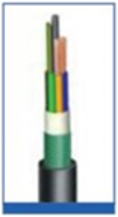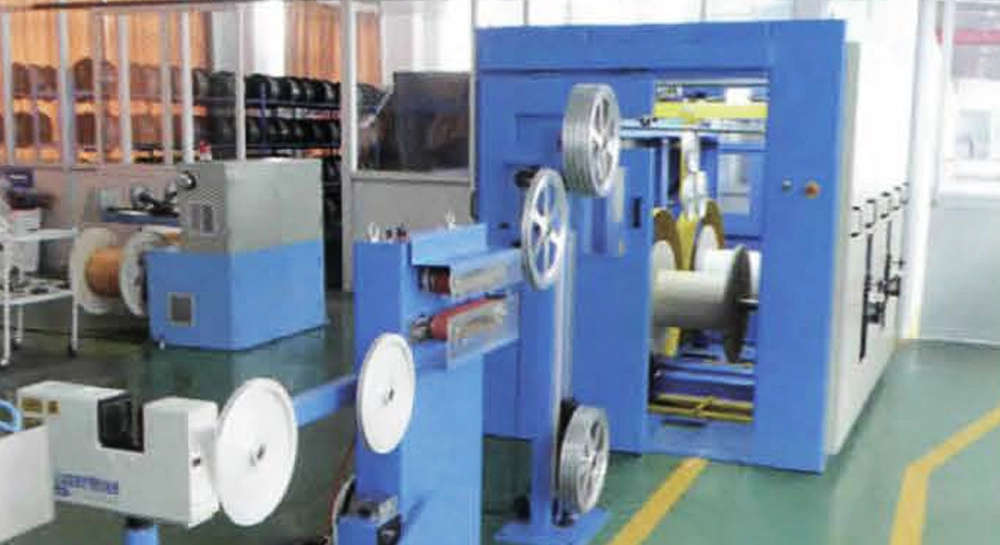year
ZTT CABLE
A Leading Global Manufacturer
of Cable Systems
The cable which ZTT offered shall be designed, manufactured and tested according to international standards
ZTT Cable / Solar PV cable
Product Summary
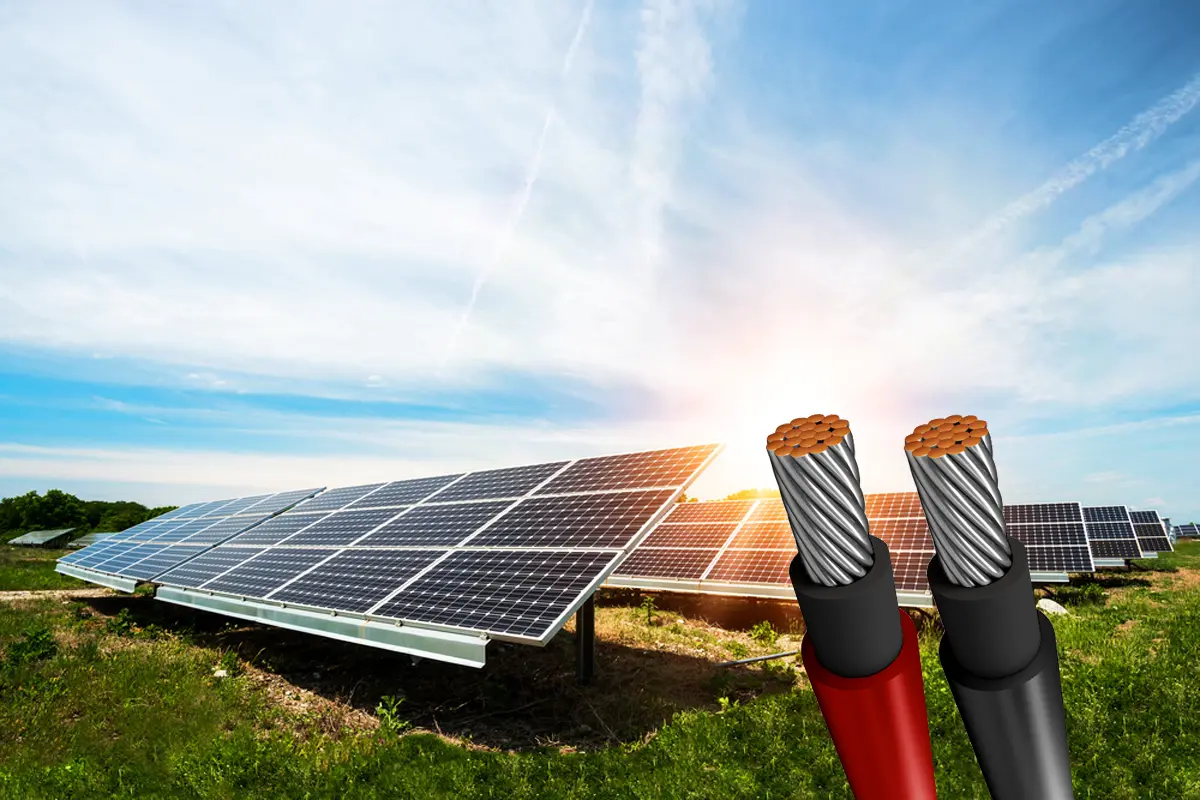
Cable
: Model H1Z2Z2-K, Brand ZTT
Certification
: TUV certification number B 098522 001 Rev. 01
Application
: Solar PV Cable, Indoor/Outdoor PV Cable
Conductor
: Tinned Copper Wire Class 5 : Classification of conductors according to IEC 60228
Insulation
: XLPO
Outer Sheath
: XLPO
Color options
: Black, Red
ZTT Cable / Solar PV cable
The cable which ZTT offered shall be designed, manufactured and tested according to international standards as follows:
Quality Control Standard
- ● ISO 9001:2005 Quality Management Systems
- ● ISO 14001:2015 Environmental Management Systems
- ● ISO 45001:2018 Occupational health safety management system
Component Material Standard
- ● IEC 60228:2004 Conductors of insulated cables
Cable Standard
EN 50618: 2014 Electric cable for photovoltaic systems. According to the EN 50618 standard, PV Cable DC products should be tested and certified by TÜV Rheinland, a world leader in testing, inspection and certification services.
ZTT Cable is a manufacturer of Solar Cable model H1Z2Z2-K which tested and approved by TÜV (Technischer Uberwachungsverein) in accordance with the requirements and EN 50618 : 2014 Standard.
Advantages

Practicable Indoor & Outdoor Use

Weather Conditions Resistant

Acid Resistant

UV & Ozone Resistant
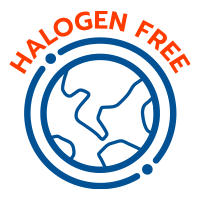
Non-Halogen Emission in Combustion

Non-flammable, Minimal Residue in Combustion

25 Years Warranty
Structure of ZTT Solar PV Cable model H1Z2Z2-K
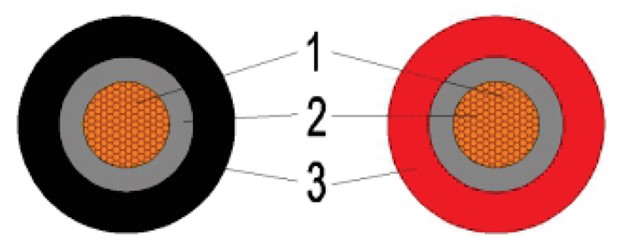
Single Core Cable Construction consists of:
Conductor
Conductor is a flexible wire type using metal materials. It is made of copper and coated with tin metal to prevent oxide formation and prevent resistance inside the conductor.
Insulation
Insulation made of XLPO (Cross-linked Polyolefin) prevents electricity from flowing only in the conductor and does not leak to other parts, which will cause hazards such as leakage or short circuit. Made of polymer plastic with high electrical resistance It is encapsulated on the conductor with the appropriate thickness so that it can support the voltage according to the rated voltage of the line. There are many types of insulation materials, each with different properties and the material that ZTT produces is Cross-Linked Polyolefin (XLPO).
XLPO insulation is produced by making polyolefin, which is thermoplastic, a chemical reaction transformed into a cross-linked which is stronger and more heat-resistant.
Sheath
Sheath (shell) made of XLPO (Cross-linked Polyolefin) is the outermost part of the electrical cable. It protects electrical wires from environmental conditions such as abrasion during installation, shock pressure, etc. sunlight It also has flame retardant properties. Low smoke and halogen emissions when exposed to fire.
Irradiation Cross-Linking of Polymers for Cable
Irradiation Cross-Linking is a radiation exposure process used to modify the polymer structure for cable insulation, enhancing its efficiency and resilience to environmental conditions such as fluid temperatures, pressure, and various operational states. This process increases the polymer’s flexibility, extends its lifespan, and allows for the production of insulation with smaller diameters.
The polymer structure is formed by molecules of carbon and hydrogen bonded together in long chains. Typically, the polymer used for cable insulation is Polyethylene, composed of carbon atoms and two hydrogen atoms (CH2).
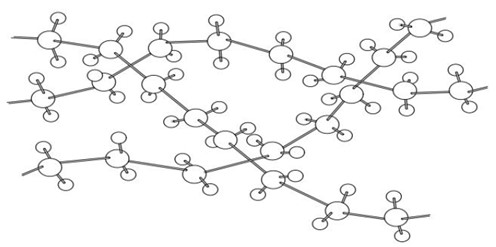
When exposed to elevated temperatures, the polymer’s bonding in Polyethylene becomes more pliable, and it can melt. Similarly, operating in low-temperature conditions can alter material properties such as flexibility and strength.
Therefore, Irradiation Cross-Linking helps improve the efficiency and enhance various properties of the material, enabling it to perform better in different temperature conditions.
The main methods of the Cross-Linking process are generally divided into two:
Chemical Vulcanization (CV / Continuous Vulcanization)
This method involves the use of chemicals to induce chemical reactions within the polymer structure, creating heat and pressure to transform the molecular structure of the polymer. A significant drawback of the chemical vulcanization process is the formation of by-products, such as peroxides, which can remain in the polymer. This leads to a reduction in insulating properties and a shorter lifespan. Polymers cross-linked using chemical vulcanization are limited to operating temperatures not exceeding 150 degrees Celsius.
Additionally, there is a risk of material twisting after the manufacturing process, especially in cable production, where it is necessary to use paper insulators to prevent adhesion between the conductor and insulation.
Irradiation Cross-Linking
Irradiation is a process that does not involve heat, pressure, steam, or chemical peroxides. This method avoids the drawbacks associated with chemical vulcanization, as it does not introduce by-products that could affect insulation properties. The irradiation cross-linking process provides greater flexibility in material applications and eliminates the need for paper insulation between the conductor and insulation in cable production. This method allows for a wider range of material uses and avoids the twisting issues associated with chemical vulcanization.
Irradiation Cross-Linking
Irradiation Cross-Linking is a process that utilizes an electron beam generator to shoot electron currents into the polymer, displacing hydrogen atoms from their positions in the hydrogen-carbon chains of the polymer. This aims to allow direct bonding reactions (C-C) between carbon atoms of the polymer, forming a tightly linked molecular structure known as cross-links. These cross-links create strong intermolecular bonds, as illustrated in the accompanying diagram.
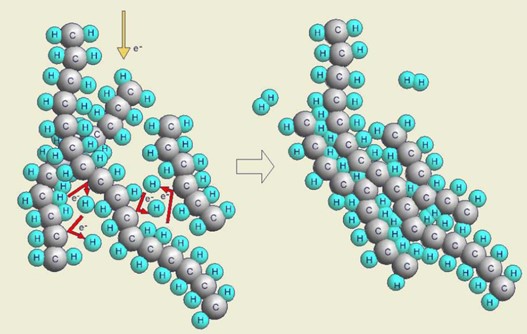
This process transforms the material from a thermoplastic (meltable) substance into a thermoset (non-meltable) material, significantly enhancing its performance and durability. This transformation is crucial in the manufacturing of electrical wires and cables to improve their operational efficiency and resistance. The irradiation cross-linking method strengthens the material by creating a network of cross-links, preventing it from melting and thereby enhancing its overall reliability in various applications.
Characteristics
Advantage
Temperature resistance
Can work well in high temperature environments, has high current carrying capacity.
Non-Peroxide
It has greater dielectric strength and strength properties.
Thermoset properties (non-molsible)
Prevents short circuit when overheating occurs.
Increased resistance to physical loads (tensile, shear, compression)
It can produce wires that are small and space-saving as well as abrasion resistant.
Do not use water or steam in the irradiation process
Reduce water and moisture problems in induction materials
Increased resistance to compression
The material is stronger and more efficient.
Increased resistance to chemicals and oils
It can be used in environments that are exposed to certain liquids.
Insoluble insulating material embedded with induction material
No need to cover the barrier paper, it can be easily cut and peeled off.
Irradiation does not affect the color of the polymer
The polymer retains its original color condition.
Can improve the flexibility to produce only the resulting product.
Installation of wires and cables is easy. It reduces the time and labor required to work.
Technical
ZTT Cable Specifications:
Dimension Data: Dimensional accordance with IEC 60228, EN 50618:2014

Electrical Data: Accordance with IEC 60228, EN 50618:2014

Note: Ambient temperature: 60 °C, Max. conductor temperature: 120°C.
Current rating conversion factors for different ambient temperatures:
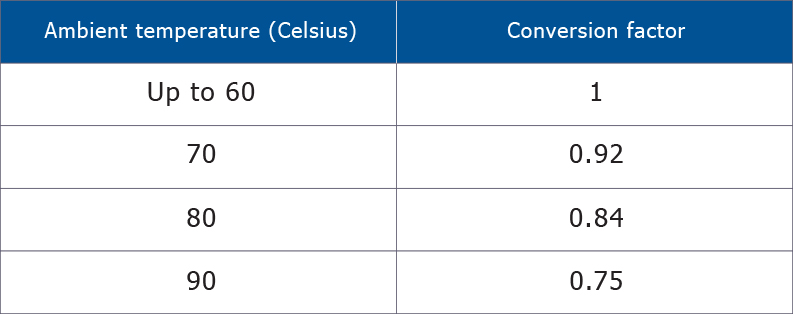
ZTT PV Cables Technical Data and characteristics
Operation temperature (°C)
: -40~+90
Min. bending radius (mm)
: 4D
Design standard
: EN 50618
Flame retardant
: EN 60332-1-2
Low smoke
: EN 61034-2
Halogen free
: EN 60754-1
Resistance to UV
: EN 50618 Annex E
Resistance to Ozone
: EN 50618 and EN 60811-403
Chemical resistance to acid and alkaline
: EN 50618 and EN 60811-404
Presence of water
: Condition AD 7
About ZTT
Why ZTT Cable?
1992
Established In 1992, ZTT embarked on a journey into optical fibre communications. ZTT Cable has evolved and diversified our industrial portfolio, expanding into marine equipment, renewable energy, new materials, smart grid solutions, optical communications and various other diversified product lines for over the years. This strategic diversification has propelled ZTT Cable into a multifaceted and forward-looking industrial player.
ZTT Cable is committed to production and development. products, especially cables, provide high efficiency and quality.
2021
year
Revenue 2021
Successfully expanded its cable thread business to cover 160 countries global markets with more than 16,000 employees, 54 Branch offices, over 2,500 Patents and ZTT Group reached Revenue for 13,400,000,000 USD in Year 2022.
ZTT Cable has Market Share is No. 1 of China Telecom and has sold many ZTT Cables in Thailand, such as: EGAT, PEA, AIS, TRUE, DTAC etc. and many Solar Farm & Solar Roof contractors.
TOP 10
Strongest Brands
ZTT cable is a brand that ranks among the Top 10 most valuable products in China and leveling A+ of the Top 10 of security products in China by Brand Finance Telecoms Infrastructure of the world.
TOP 10
Most Valuable Brands
ZTT Cable is the Top 5 manufacturer of fiber optic cable products in China.
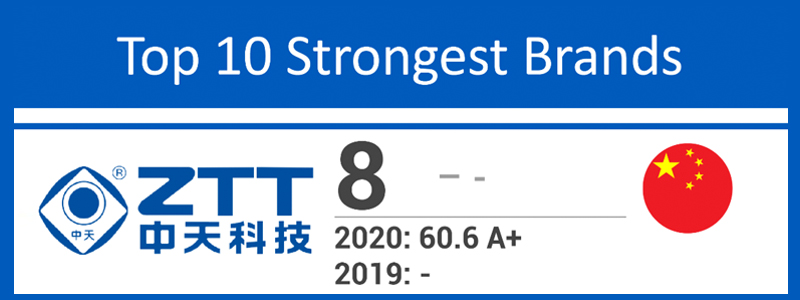
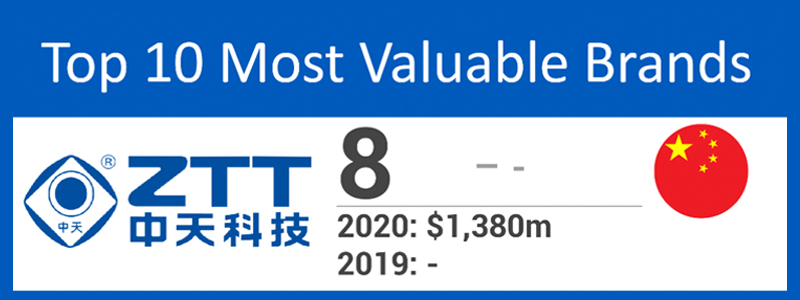
Brand Finance Telecoms Infrastructure 10
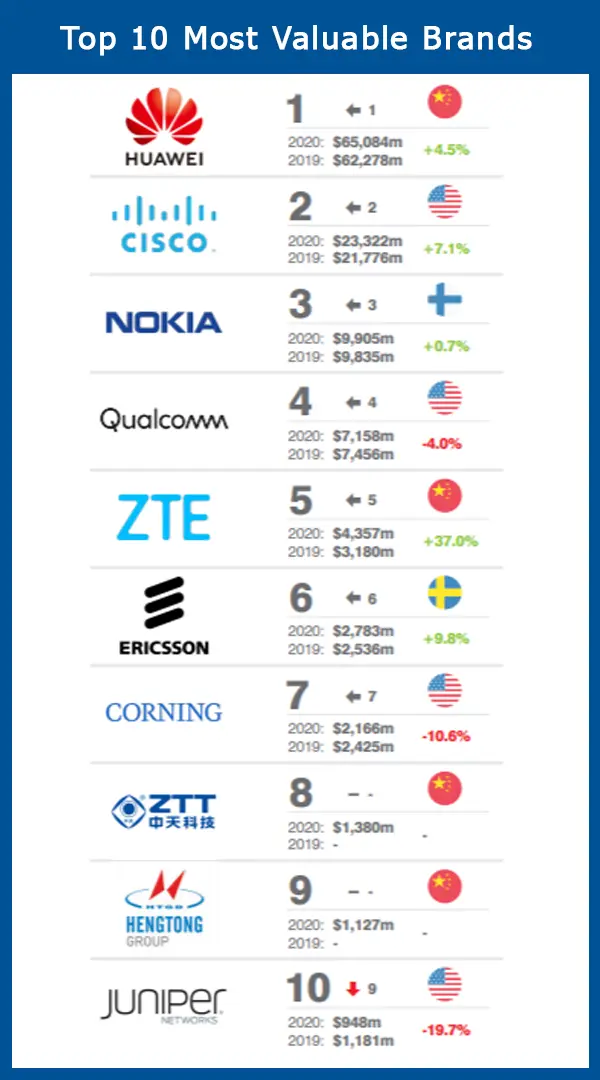
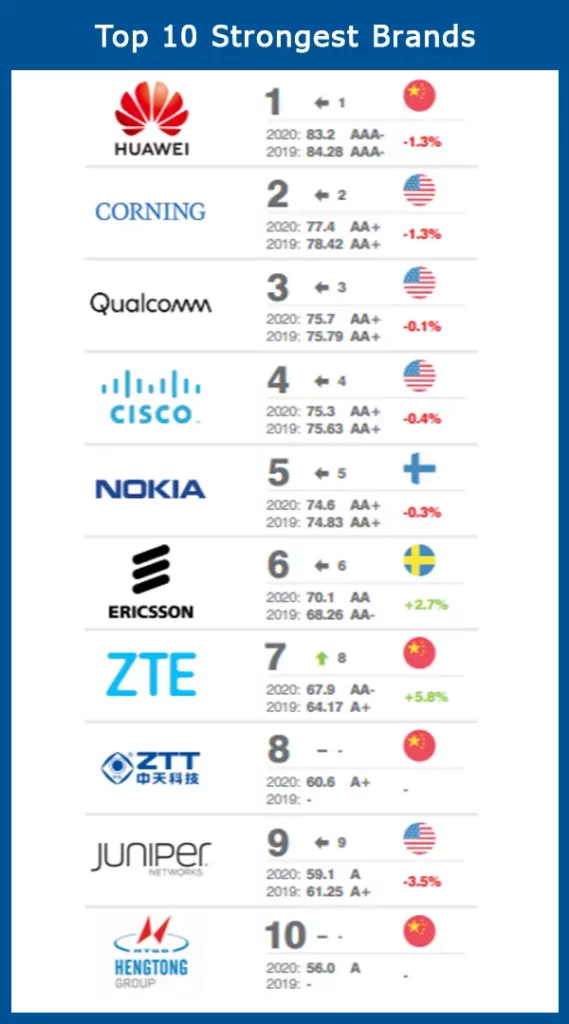
ZTT Cable is a company with a financial structure ranked among the top 10 in the world. Telecommunication industry manufacturers

TELECOM
- ● Preform
- ● Optical Fiber
- ● Fiber Optic Cable
- ● ODN Products
- ● Antenna & FTTA System
- ● 5g BTS Energy Solution
- ● Coaxial Cable
- ● Optical Transcelver & Active Optical Cable
- ● Data Center
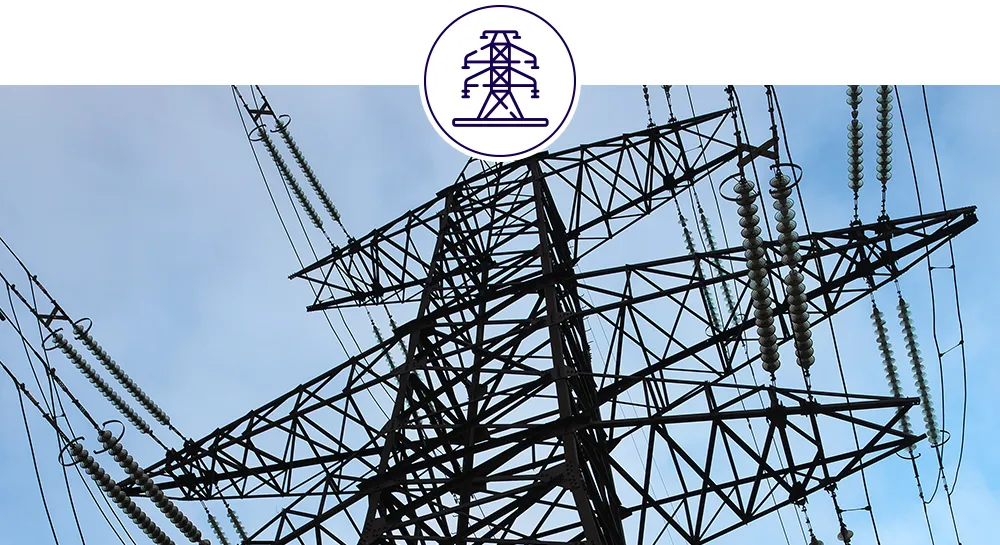
POWERGRID
- ● Power Cable
- ● Overhead Conducter
- ● OPGW/OPPC
- ● Insulator
- ● Hardware
- ● Transformer
- ● Power Cabinet
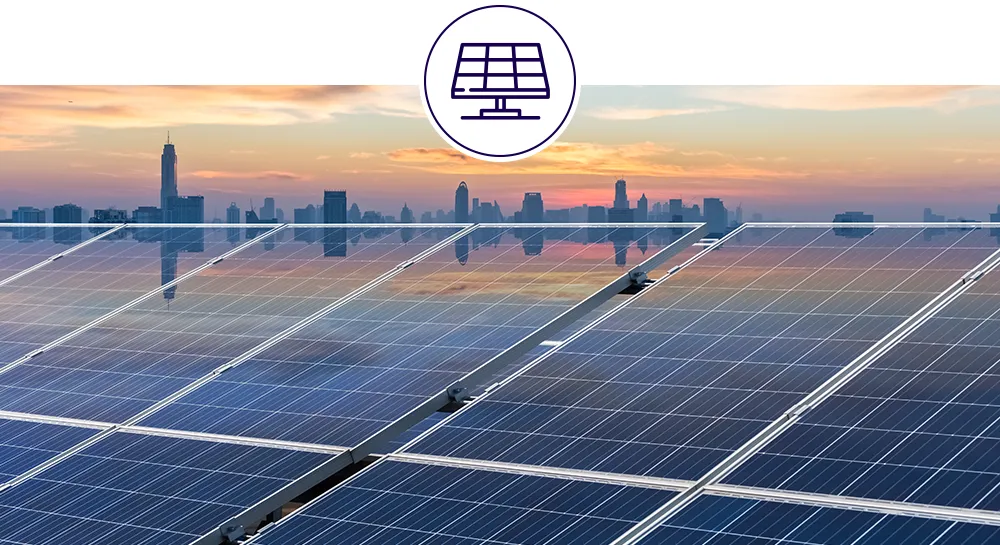
RENEWABLE ENERGY
- ● Photovoltaic support bracket
- ● Photovoltaic cable
- ● Uthium Battery
- ● Mounting System
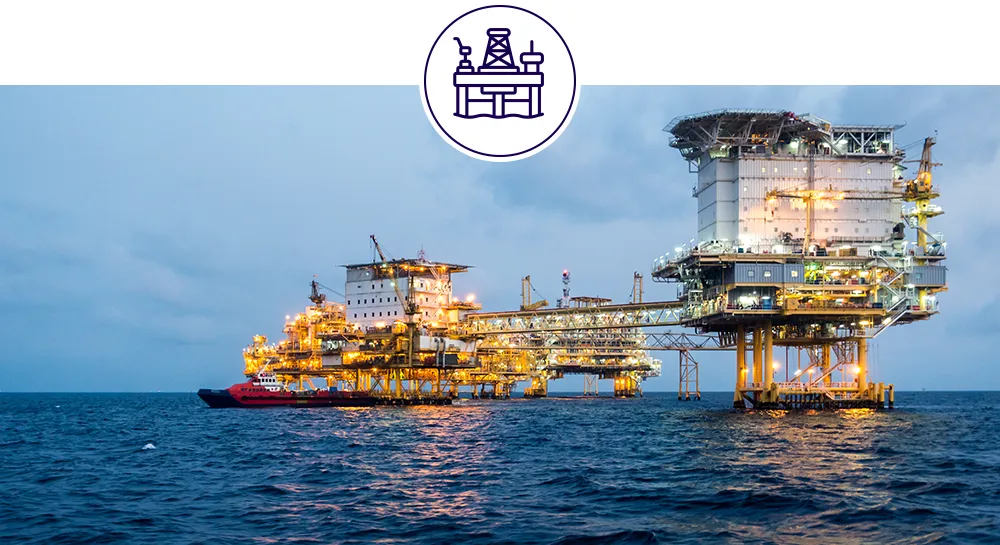
MARINE SYSTEM
- ● Submarine Cable
- ● Marine System
- ● Marine Engineering
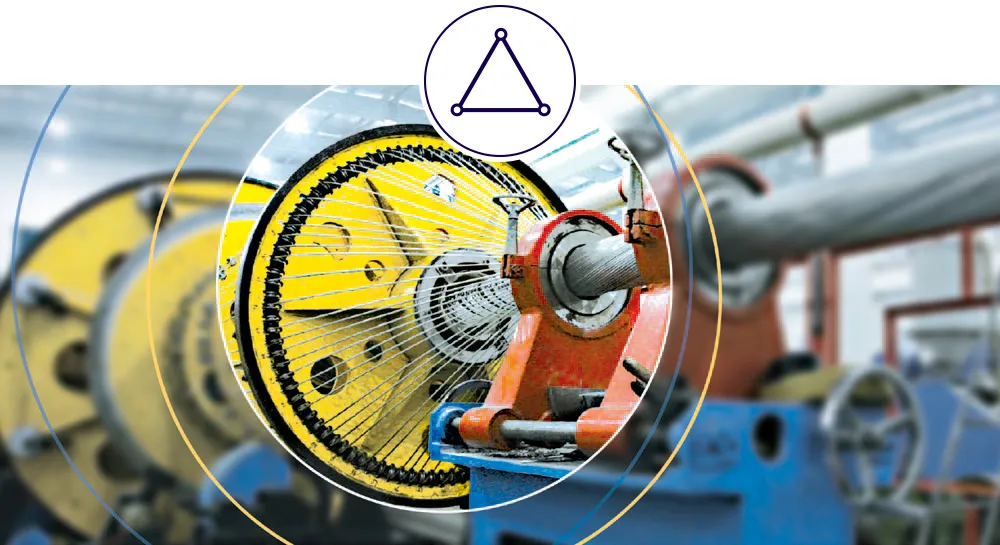
PRECISION EQUIPMENT
- ● Industry Cabke
- ● Machinery Manufacture
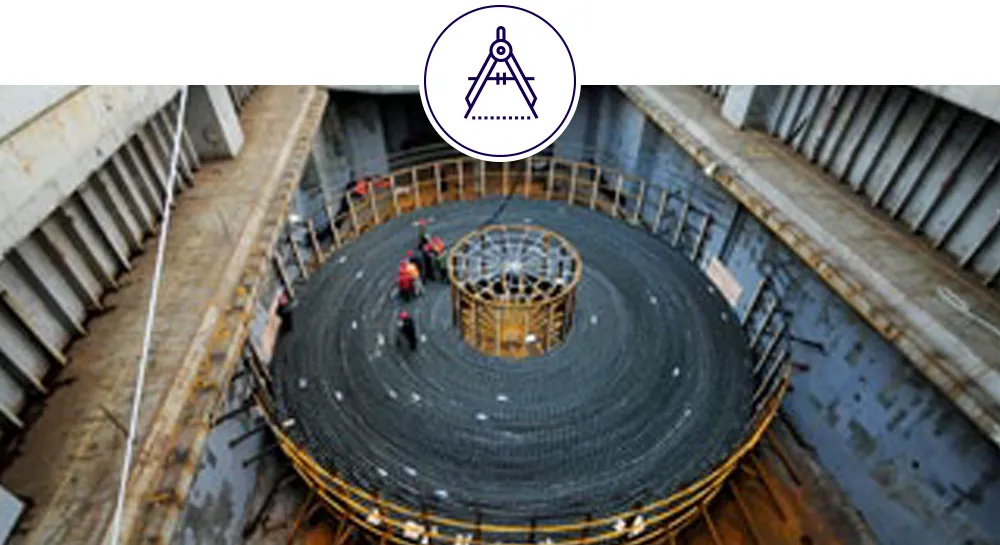
EPC
- ● Overhead Transmission Line
- ● Undergroun Cable System
- ● Submarine Cable System
- ● Telecommunication Line & FTTH System
- ● Smart Substation Solution
- ● New Energy Power Generation
- ● Optical Products-Optical Transcelver & Active Optical Cable
TELECOM
Optical fiber annual production capacity of 85,000,000 core kilometers.
Optical cable annual production capacity of 3,500,000 kilometers

Preform (The Pearl of teh Communication Industry Crown)
- ● The only “super Large size fully synthetic optical fiber preform” with complete independent intellectual property rights in china (190mm*2m)
- ● VAAD(cora) +OVD (cladding) complete synthetic preform manufacturing technology

Optical Fiber (Special fiber fills domestic GAP)
- ● Low-loss fiber, (super) low-loss large-area fiber industry leading the industry filling the domestic gap
- ● Ultra-large length, ultra-high proof stress cable for Submarine cable
- ● Extremely cold-resistant fiber, supporting the construction of Qinghai-tibet transmission line

Fiber Optic Cable (Special optical cable, power cable, submarine cable)
- ● Intellogemt Plant
- ● World-class specialist for special fiber optic cable
- ● ADSS, OPGW national single champion
- ● Participated in the drafting of domestic industry standards for air blowing micro-cables
- ● Maximum core number can be 864 fibers for Micro bundle cable
- ● Participate in the revision of the international standard IEEE 1222-ADSS
Coaxial Cable
The only test platform for leaky coaxial cable tunnel simulation in China
FTTx
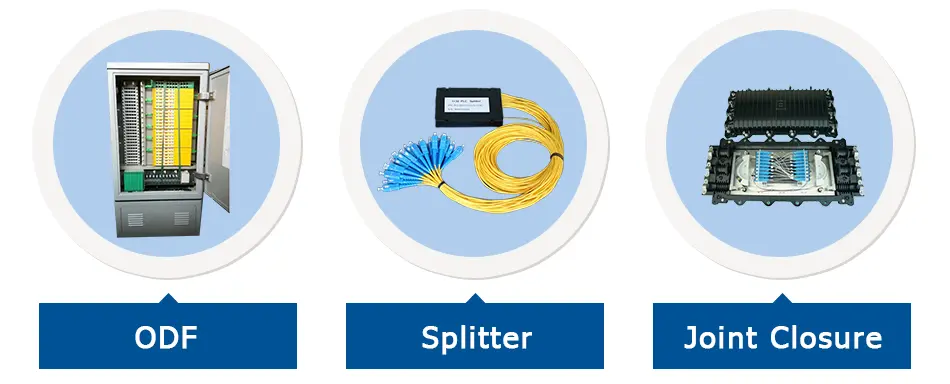
Integrated service provider for complete FTTx product line
TELECOM
Products for Data Center-MPO
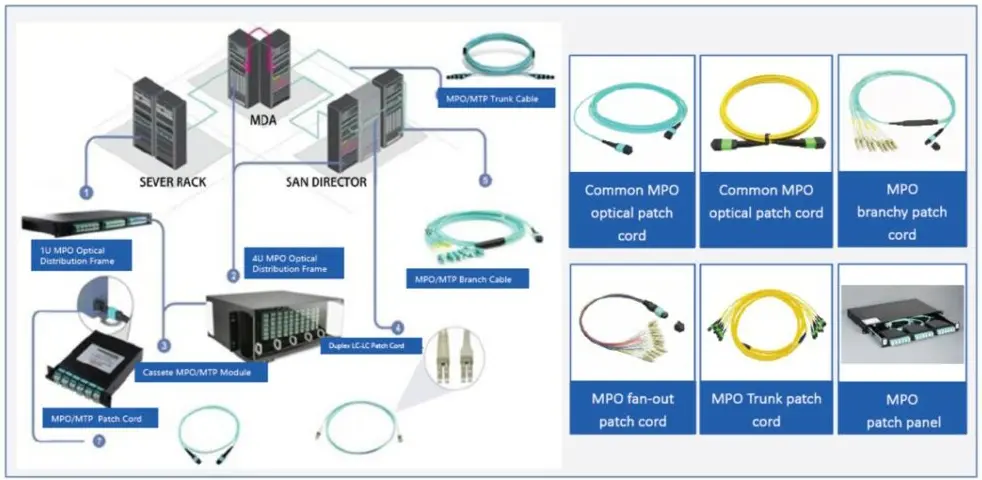
ENERGY
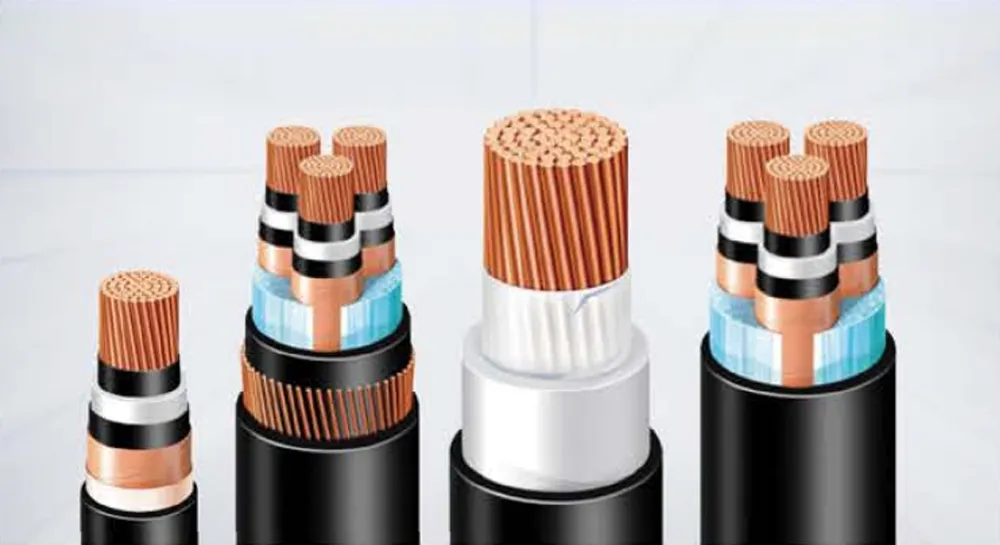
Power Cable
- ● LV,MV,HV,EHV cable solutions
- ● 62 global markets
- ● 75 power utilities
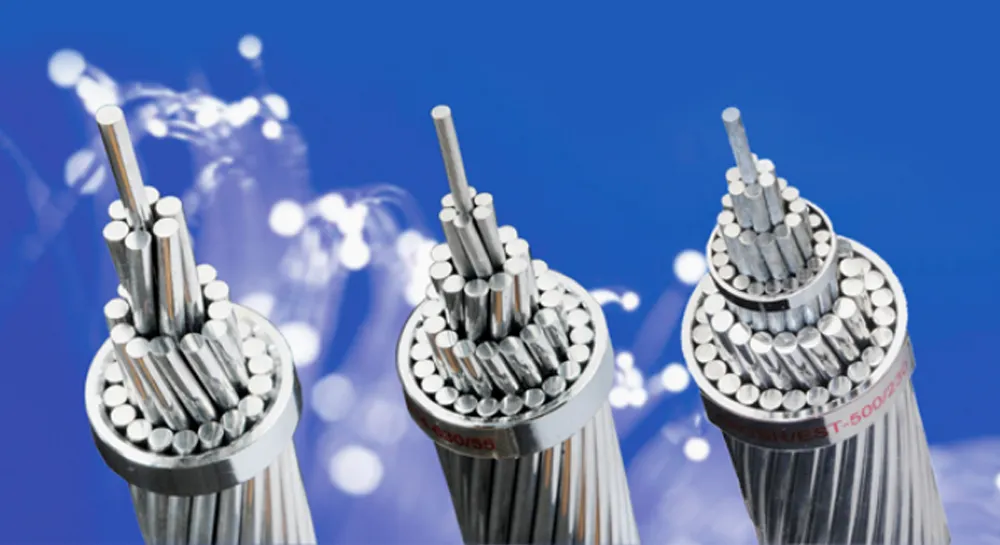
Overhead Conductor
- ● 1,500,000 tons online operation
- ● 85 global market
- ● 320 power utilities
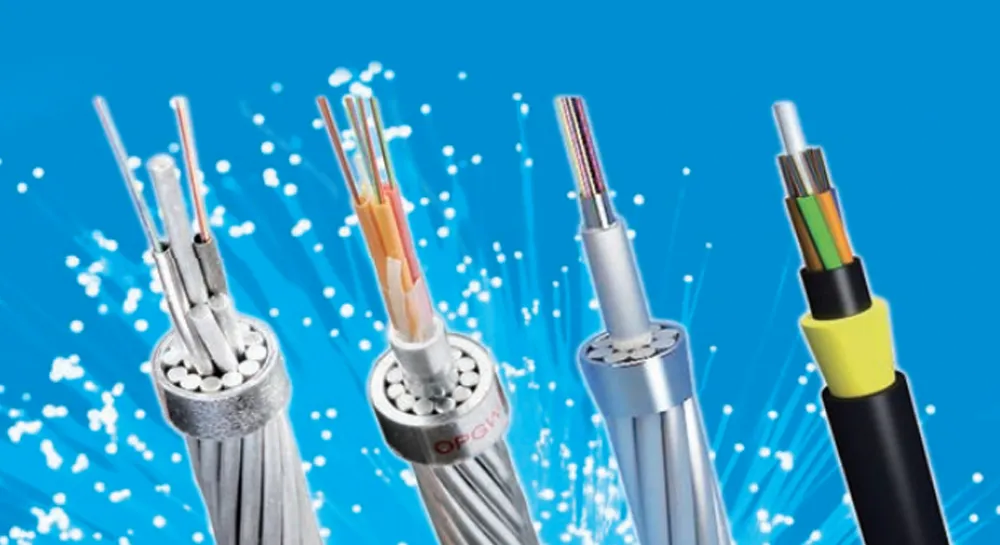
OPGW/OPPC
- ● Top 1 global market share
- ● 590,000km online operation
- ● 125 global markets
- ● 518 power utilities
- ● IEEE 1138 OPGW revision participant
- ● IEEE 1595 OPPC drafter
- ● Typical Experience U⁴⁺
- ● Ultra-high Voltage 1000kv, ±1100kv
- ● Ultra-long Span 2,756m
- ● Ultra-low Temperature -60⁰C
- ● Ultra-heavy ice load 60mm
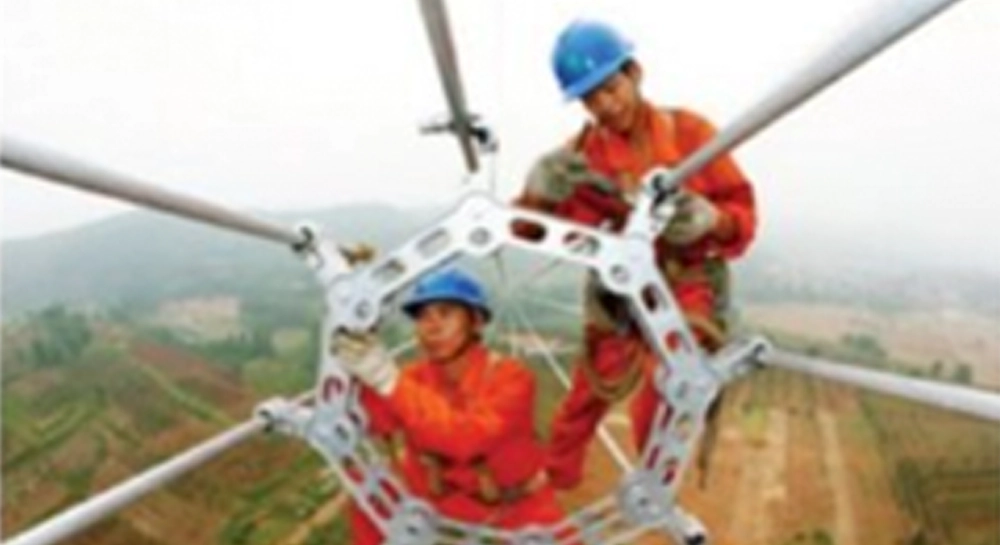
Hardware
- ● 71 global markets
- ● 128 power utilities
- ● Max Voltage
- ● Up to 1000kv, ±1100kv
- ● Max Span 1,940m
- ● Max Altitude 5,300m
- ● Max Strength 1200kn
- ● Type Test : KEMA, CESi, VEIKI
- ● Overhead Line Fittings
- ● Substation Hardware
- ● OPGW/ADSS/OPPC/OPF Hardware
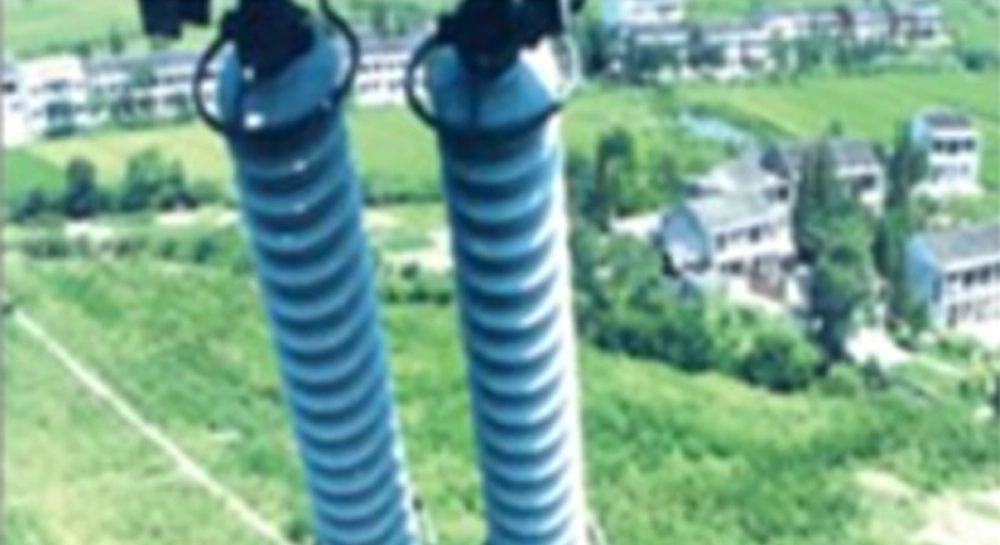
Insulator
- ● 36 global markets
- ● 74 power utilities
- ● Voltage : Upto ±1100kv, 1000kv
- ● Max Strength : 1000kn
- ● Type Test Report : ±1100kv, 1000kv,
- ● 5000h Multi-stress Test Report
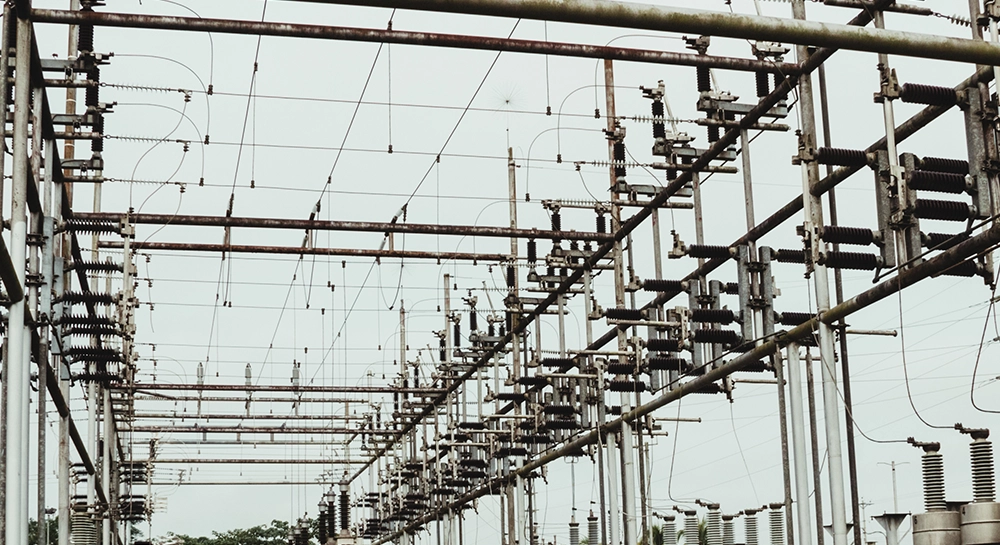
Surge Arresters
- ● For transmission & substation
- ● Vlotage up to 500kv
- ● Side insulated glazed resistor with heat resistance up to 470 ⁰C
- ● China’s first fully enclosed slurry production line
- ● China’s First 10000-Class Cleanliness Purification Assembly Room
MARINE SYSTEM
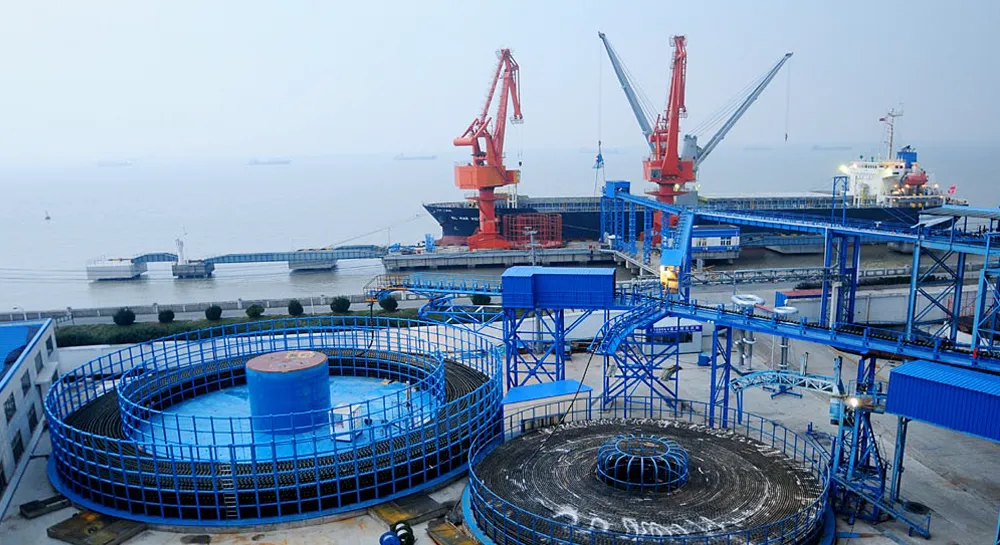
Submarine Cable
The largest and most comprehensive manufacturing base for submarine cable in Asia, with over 10,000 km supplied globally.
- ● Submarine fiber optic cable
- ● Submarine power cable
- ● Submarine composite cable
- ● Dynamic submarine cable
- ● Umbilical
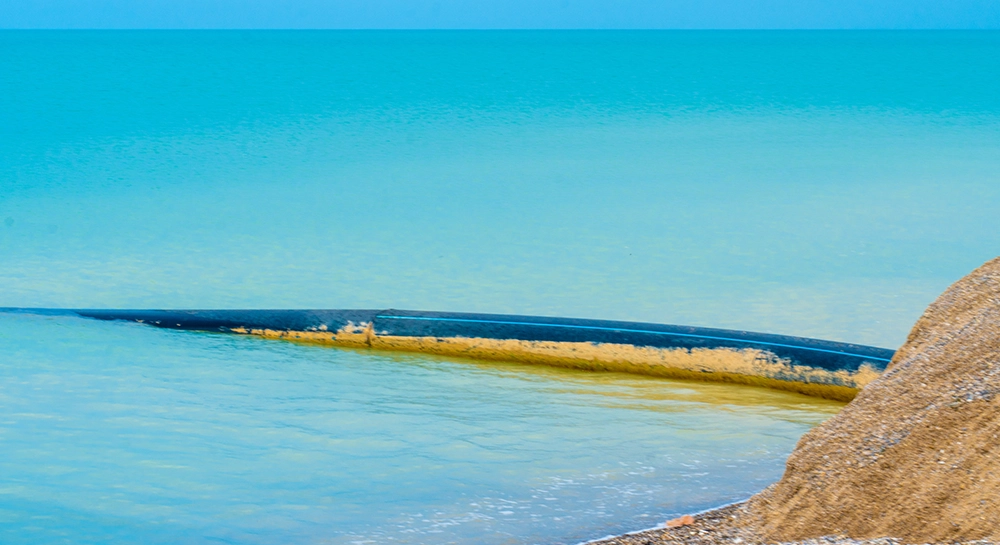
Marine System
- ● Oceanic observation system
- ● Submarine cable accessories
- ● Repair joint
- ● UJ and UQJ joint
- ● Sea-land joint
- ● Bend restrictor
- ● J-tube seal/centralizer
- ● FP / Power Junction box
- ● Onshore/offshore hang off
- ● Pulling grips/pulling head etc.
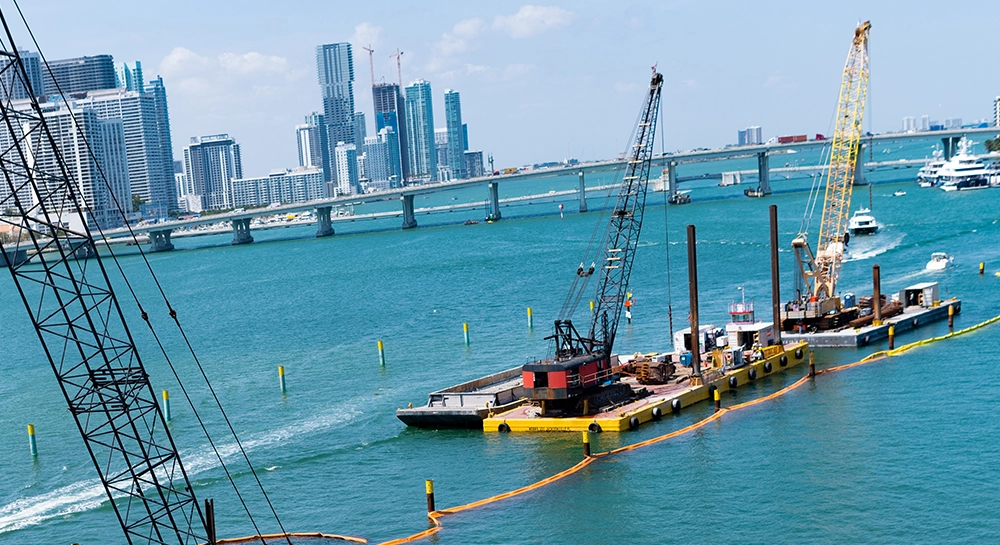
Marine Engineering
- ● Submarine cable installation
- ● Horizontal directional drilling (HDD)
- ● Installation of oceanic observation system
- ● Offshore foundation installation
- ● Offshore wind turbine installation
- ● Repair and maintenance
- ● Testing and other services
PRECISION EQUIPMENT
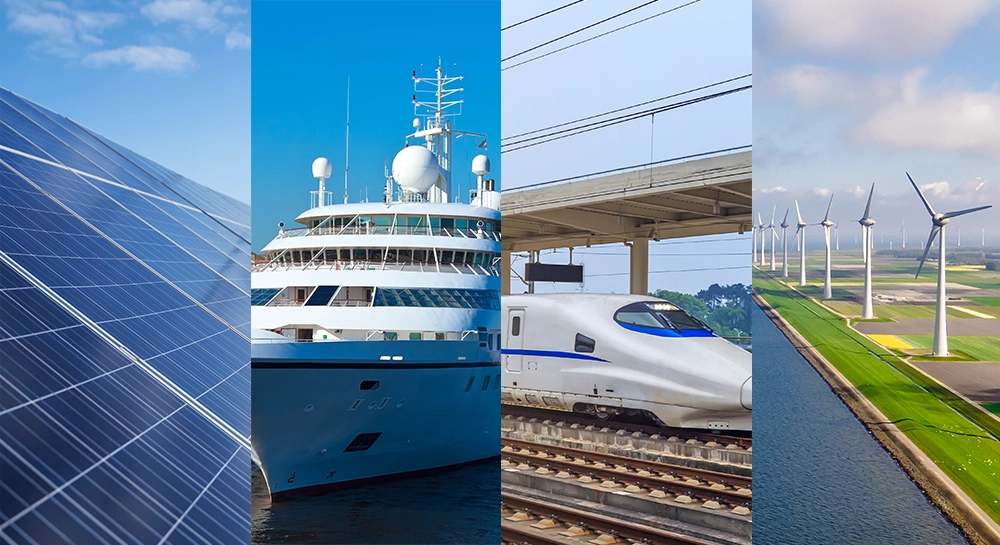
Industry Cable
Provide cable solutions for different applications
-
● PV Cable
(88 PV Stations, total 1380MW, TUV Certificate) -
● Shipboard and Offshore Cable
(9 global classification society certificates, over 26,500km) -
● Rolling Stick Cable
(acc. to EN std., Max. voltage 26/45kV, CRCC Certificate, over 34,500km) -
● Windfarm Cable
(good torsion resistance acc. to HD std., over 2,400km)
